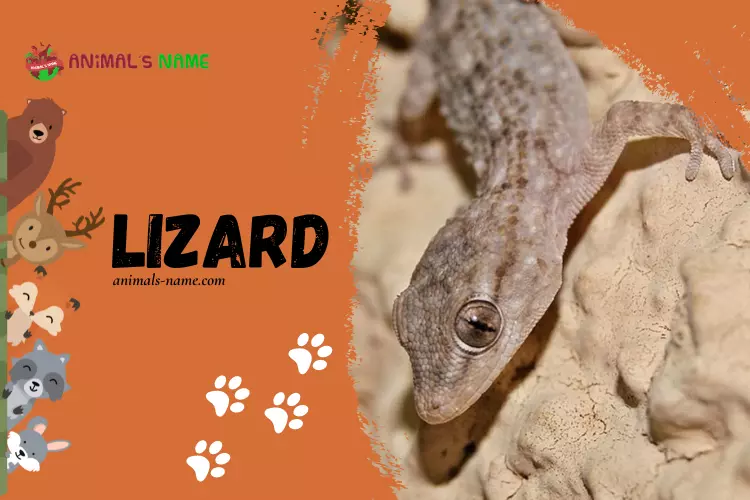Welcome to the world of the Lizard Trap, where we explore a clever way to catch these fascinating animals! Lizards are known for their quick movements and ability to escape, but sometimes, we might need to catch them for various reasons, like studying them or even as pets. That’s where the Lizard Trap comes in.
In this exciting adventure, we’ll learn animals’ names, how this particular gadget works, and how it helps us safely capture lizards. You’ll discover how to set up the trap, what kind of bait attracts these animals, and why handling them carefully is essential.
So, whether you’re a curious nature enthusiast or want to observe these remarkable animals up close, join us as we dive into the world of the Lizard Trap and uncover the secrets of safely catching these incredible creatures!
1. Identifying the Lizard
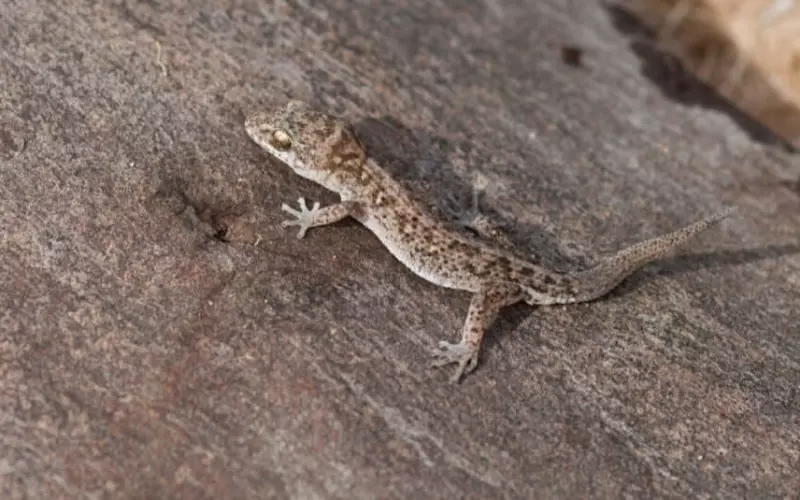
The first step in catching a lizard is identifying the lizard you want to catch. Lizards come in all shapes, sizes, and colours, so knowing which kind you’re dealing with is essential. Here’s how to do it:
- Observe Its Appearance: Take a good look at the lizard. Notice its size, colour, and any unique markings or features. Some lizards have spots, stripes, or distinctive patterns that can help you identify them.
- Count Its Legs: Lizards have four legs, distinguishing them from snakes with no legs. Check to see if the animal you’re looking at has four legs.
- Check Its Tail: The shape and length of the tail can also be a clue. Some lizards have long, slender tails, while others have short, stubby tails.
- Watch Its Behavior: Pay attention to how the lizard behaves. Some lizards are fast runners, while others might climb trees or stay hidden in rocks or caves.
- Use Field Guides or Apps: If unsure, you can use field guides or smartphone apps designed to help identify different lizard species. These tools can provide valuable information and pictures to compare with the lizard you’ve found.
By correctly identifying the lizard, you’ll better understand its habits and needs, which can help you catch and handle it safely if necessary. Always treat lizards carefully and release them back into their natural habitat after observing or studying them.
2. Gather Your Supplies
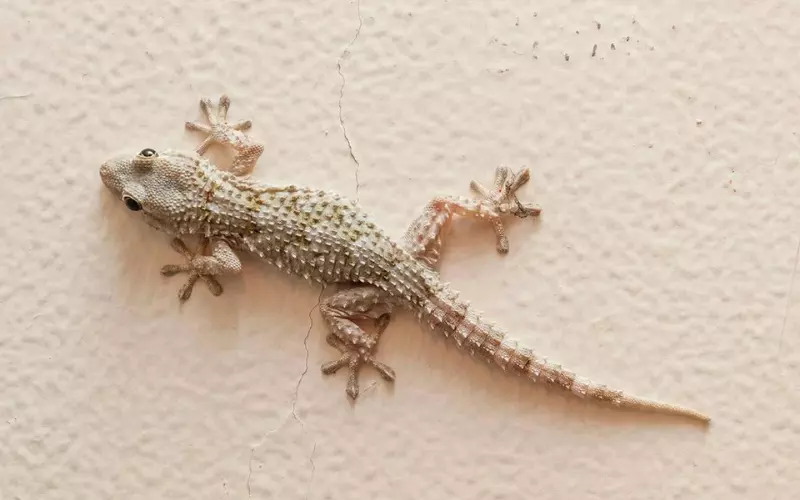
Get ready to embark on a lizard-catching adventure! You’ll discover how to catch these fascinating creatures safely with the right supplies and patience. Let’s dive into the world of lizard-catching and learn how to observe and release them responsibly.
- Lizard Trap or Container: You can use a specially designed lizard trap or a small container with a lid. Make sure it has some air holes to allow the lizard to breathe.
- Bait: Lizards are attracted to various foods, including insects like crickets, mealworms, or small pieces of fruit. Use bait that the specific type of lizard you’re targeting likes to eat.
- Gloves: Wearing gloves is a good idea, especially when handling lizards. This protects both you and the lizard from any harm.
- Net or Stick: A small net or a soft stick can help gently guide the lizard into the trap or container.
- Patience: Catching a lizard can take some time, so be patient and move slowly to avoid scaring it away.
- Notebook and Pen: If you’re studying or observing the lizard, a notebook and pen can be handy for taking notes and recording your observations.
- Camera: If you want to document your lizard-catching adventure, a camera or smartphone can help you capture photos or videos.
Now that your supplies are ready, you can start catching a lizard safely and responsibly. Remember to treat these fantastic creatures carefully and return them to their natural habitat after completing your observations or studies.
3. Choose the Right Time
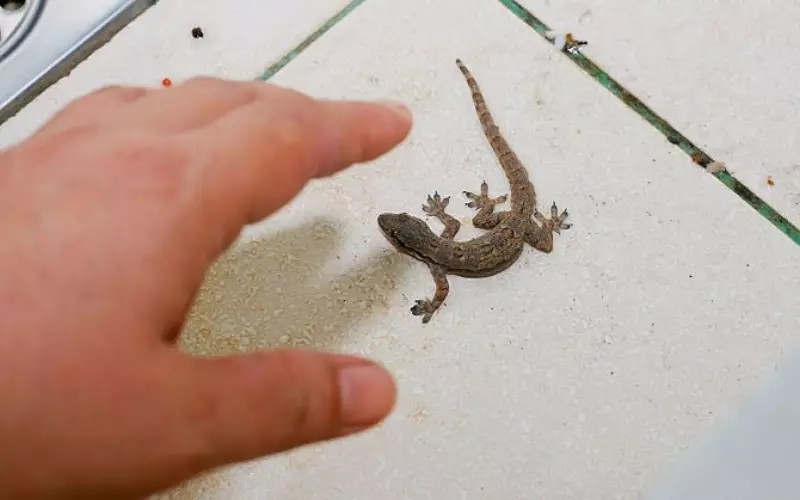
Choosing the right time is crucial when trying to catch a lizard. Lizards are most active during the day when it’s warm and sunny. So, it’s a good idea to go lizard-catching on a sunny day, preferably in the morning or late afternoon.
Lizards love basking in the sun to warm up their bodies and become more active. They might be found on rocks, tree branches, or walls soaking in the sunlight.
During calmer times, like early morning or late evening, lizards might not be as active, making them harder to catch. So, for the best chance of spotting and catching a lizard, pick a sunny day and the right time when these amazing creatures are most active and more straightforward to observe in their natural habitat.
4. Set a (Humane) Lizard Trap with Bait
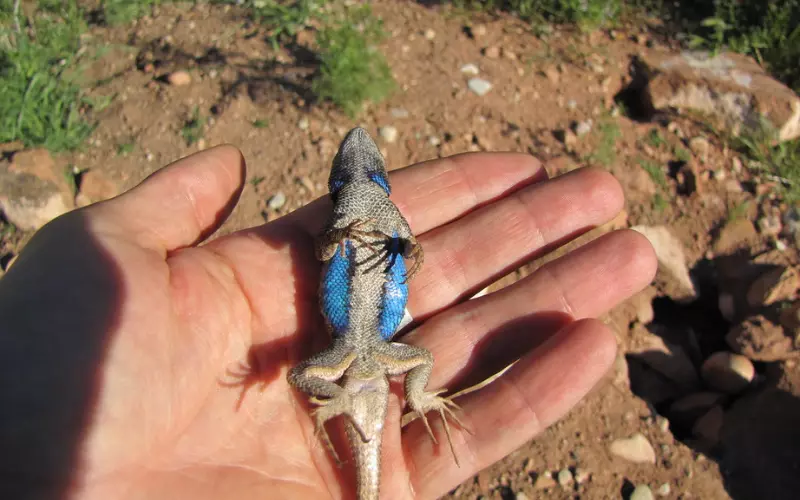
Setting up a humane lizard trap with bait is a safe way to catch lizards without causing them harm. Begin by preparing a small container with a secure lid, such as a plastic cup or jar, ensuring it has tiny holes for air.
Next, select the right bait – lizards are particularly drawn to insects like crickets, mealworms, or small fruit pieces. Place the chosen bait at the bottom of the container. Position the trap where you’ve previously spotted lizards or where they are likely to visit.
Then, maintain a patient and watchful distance, allowing the lizard the time it needs to be enticed by the bait and enter the trap. Lizards can be cautious, so patience can go a long way in catching them while ensuring their well-being.
5. Observe and Learn
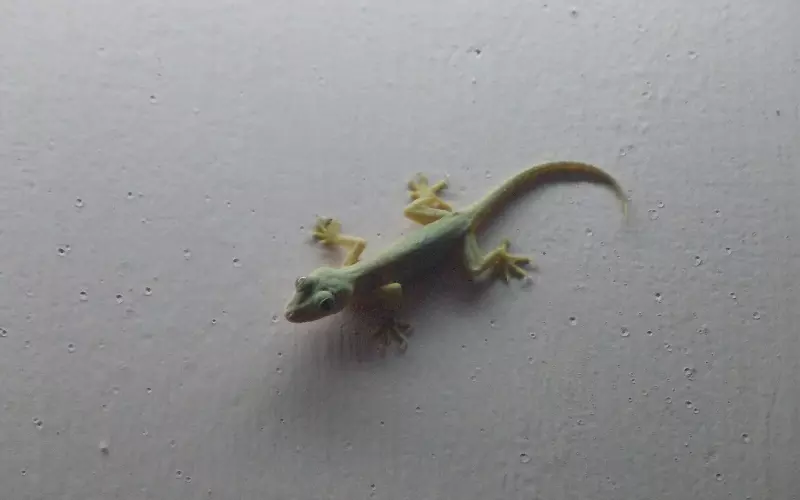
Once you’ve successfully caught the lizard in your humane trap, it’s time to observe and learn from your new reptile friend. But remember, it’s important not to stress the lizard and to keep your interaction brief to ensure its well-being.
First, take a close look at the lizard’s features. Notice its size, colour, and any unique markings. Is it a bright green anole or a small brown skink? These observations can help you identify the type of lizard you’ve caught.
Next, watch how the lizard behaves. Does it dart around quickly, or is it more relaxed and slow-moving? Is it climbing trees or hiding under rocks? These behaviours can tell you more about the lizard’s habits and its natural environment.
By observing the lizard without causing it stress, you can learn valuable information about these fascinating creatures and gain a deeper appreciation for the world of reptiles.
6. Return the Lizard to the Wild

Once you’ve observed the lizard and learned from your encounter, it’s time to return it to its natural habitat in the wild. Here’s how you can do it responsibly:
- Choose a Good Spot: Find a suitable location similar to where you initially caught the lizard. Look for a place with the right temperature, food, and shelter.
- Release Gently: Carefully open the container or trap and let the lizard come out independently. Please don’t force it or make sudden movements that could scare it.
- Offer Shelter: If you can, place the lizard near a tree, bush, or rock where it can quickly find shelter and hide from predators.
- Watch from Afar: After releasing the lizard, observe from a distance to ensure it’s safe and doesn’t seem stressed.
By returning the lizard to its natural home, you’re helping it continue its life in the wild, where it belongs. Remember, we aim to interact with these incredible animals respectfully and responsibly.
The Behavior and Habits of Lizards

Lizards are fascinating creatures with interesting behaviours and habits. They love basking in the sun to warm their bodies because they’re cold-blooded. You might see them soaking in the sunshine on rocks or tree branches.
Thanks to their sticky feet, they’re also great climbers and can stick to walls and ceilings. This helps them hunt for insects, which make up most of their diet. They use their quick tongues to catch those bugs!
Lizards can sometimes shed their tails when scared, a clever trick to escape predators. Don’t worry; the tail can grow back over time. Some lizards change colours to match their surroundings or show their feelings. They might turn darker when they’re cold or lighter when they’re warm. Overall, lizards are like little sun-loving, insect-hunting, colour-changing acrobats of the animal world!
The Stages of a Lizard’s Life Cycle
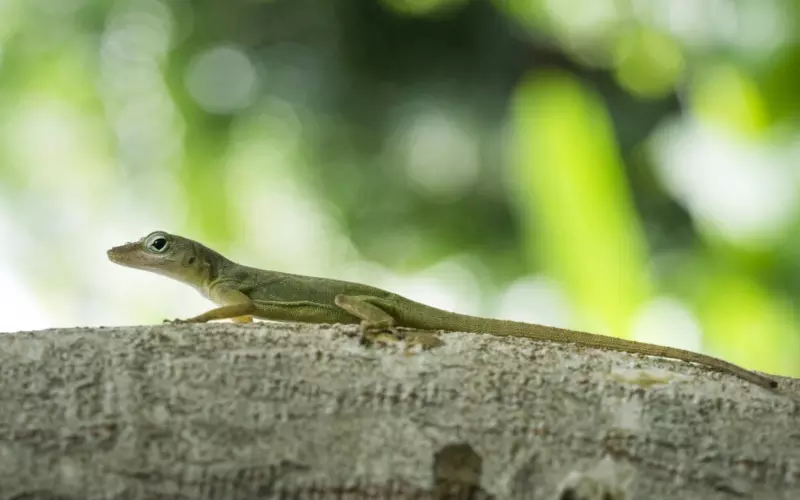
A lizard’s life cycle has several stages:
- Egg: It all begins when a female lizard lays eggs in a safe spot, like in sand or soil. The eggs are usually hidden and left alone by the mom.
- Hatchling: When the eggs hatch, tiny baby lizards, called hatchlings, come out. They’re very small and vulnerable.
- Juvenile: As the hatchlings grow, they become juveniles. They start to look like mini-adult lizards but are still small and not fully grown.
- Adult: Eventually, the juveniles grow into full-sized adult lizards. They’re now ready to find mates and start the cycle again by laying eggs.
Throughout their lives, lizards are cold-blooded, which means their body temperature depends on the environment. They often bask in the sun to warm up or hide in the shade to cool down. This life cycle helps lizards continue their kind and adapt to their surroundings.
The Role of Lizards in Ecosystems
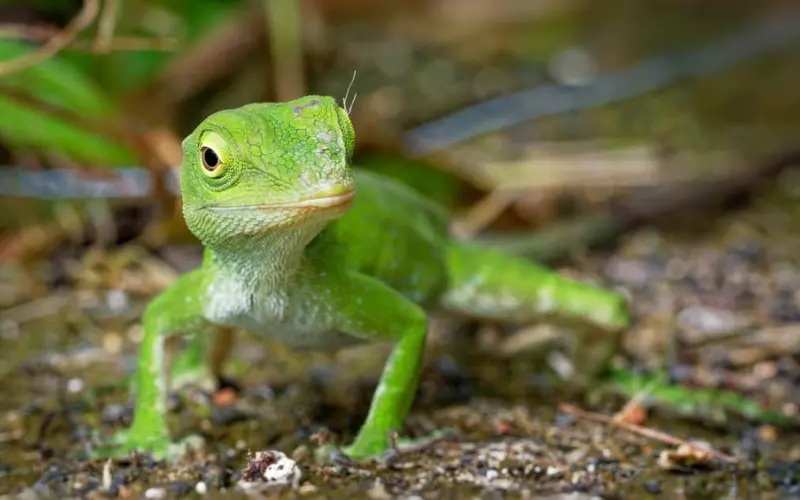
Lizards play vital roles in ecosystems and are like nature’s little helpers. Here are some important roles they perform:
- Insect Control: Many lizards are insect-eaters. They help control insect populations by munching on pests like flies, mosquitoes, and ants. This benefits plants and reduces the spread of diseases carried by insects.
- Seed Dispersal: Some lizards eat fruits and seeds. When they move around and digest these seeds, they help plants spread and grow in different areas, contributing to the diversity of plant life.
- Prey and Predator: Lizards are both prey and predators. They are food for larger animals like birds and snakes, contributing to the food web. At the same time, they hunt smaller creatures like insects, helping to maintain balance in the ecosystem.
- Pollination: Certain lizard species are pollinators. They visit flowers to feed on nectar, transferring pollen between flowers and aiding in plant reproduction.
- Indicator Species: Lizards are sensitive to environmental changes, so their presence or absence can indicate the health of an ecosystem. Monitoring lizard populations can help scientists assess ecosystem health.
Lizards are essential for maintaining a balanced and healthy ecosystem by controlling pests, aiding in plant growth, contributing to food chains, and even assisting in plant reproduction. They are tiny but significant contributors to the natural world.
Conclusion
Once you’ve caught a lizard, please take a moment to observe its unique features and behaviour, but be gentle and quick to avoid causing any stress. Then, it’s time to release the lizard back into the wild, where it can thrive in its natural habitat.
Through this adventure, you’ve learned about lizards and practised responsible interaction with wildlife. By respecting and caring for these amazing animals, you’ve contributed to their well-being and conservation. So, keep exploring and appreciating the incredible world of nature!
Frequently Asked Questions About Catching a Lizard (FAQ’s)
Q: What is the best way to trap a lizard?
A: Using a humane lizard trap with bait is safe and effective.
Q: Is there a trap for lizards?
A: You can find special traps designed to catch lizards without harming them.
Q: How do you trap lizards at home?
A: Place a lizard trap with bait in areas where lizards are active, like near windows or doors.
Q: How do you trap a lizard in the kitchen?
A: Set a lizard trap with bait in the kitchen, focusing on spots where lizards often appear.
Q: How do I permanently get rid of lizards?
A: To deter lizards, keep your home clean, seal entry points, and use lizard repellents.
Q: Can Dettol keep lizards away?
A: Some people use Dettol as a lizard repellent, but results may vary.
Q: What smell do lizards hate most?
A: Lizards may dislike the smell of cloves, garlic, or mothballs.
Q: Which spray kills lizards?
A: Insect sprays can kill lizards, but it’s better to use humane traps.
Q: How can you remove lizards from your home?
A: Catch and release lizards using humane traps or deter them with repellents.
Q: What smell chases lizards away?
A: Lizards may be deterred by the scent of cloves, garlic, or vinegar.
Q: Are naphthalene balls harmful to lizards?
A: Naphthalene balls can repel lizards but should be used cautiously due to their strong odor.
Q: Is there any spray for lizards?
A: Yes, you can find commercial lizard-repellent sprays.
Q: What if I killed a lizard in my house?
A: If accidental, safely dispose of it. Otherwise, consider humane methods for future encounters.
Q: How do I get rid of lizards once and for all?
A: Prevent their entry, use repellents, and maintain a clean home to discourage them.

Hi there, I’m Emily Buono, and I’m thrilled to introduce myself! Currently, I’m part of two fantastic places: I work as a VisEx at the New England Aquarium and as an RAS at MGH CCM.
I completed my education at the Mass General Research Institute and Stonehill College, which is located in Valatie Colony, New York, in the United States.
Now, here’s the exciting part: I absolutely adore animals! They captivate me, and I’m always eager to learn more about them. In fact, I write articles all about these incredible creatures.
In the past, I’ve worn many hats, such as being a biologist at the Maria Mitchell Association, a cashier, a floor organizer, and a visitor experience and research animal specialist.
My passion lies in exploring the world of animals and helping others understand them better. So, if you ever have questions about animals, feel free to reach out. I’m here to make animal info easy and fun to grasp!

